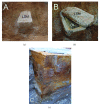Mummification in Korea and China: Mawangdui, Song, Ming and Joseon Dynasty Mummies
- PMID: 30302339
- PMCID: PMC6158963
- DOI: 10.1155/2018/6215025
Mummification in Korea and China: Mawangdui, Song, Ming and Joseon Dynasty Mummies
Abstract
Over the decades, mummy studies have expanded to reconstruct a multifaceted knowledge about the ancient populations' living conditions, pathologies, and possible cause of death in different spatiotemporal contexts. Mainly due to linguistic barriers, however, the international knowledge of East Asian mummies has remained sketchy until recently. We thus analyse and summarize the outcomes of the studies so far performed in Korea and China in order to provide mummy experts with little-known data on East Asian mummies. In this report, similarities and differences in the mummification processes and funerary rituals in Korea and China are highlighted. Although the historical periods, the region of excavation, and the structures of the graves differ, the cultural aspects, the mechanisms of mummification, and biological evidence appear to be essentially similar to each other. Independently from the way they are called locally, the Korean and Chinese mummies belong to the same group with a shared cultural background.
Figures





References
-
- Cockburn T. A., Cockburn E., Reyman T. A. Mummies, Disease, & Ancient Cultures. 2nd. Cambridge: Cambridge University Press; 1998.
-
- Aufderheide A. C. The Scientific Study of Mummies. Cambridge: Cambridge University Press; 2003.
-
- Peng L. X., Wu Z. B. China: the Mawangtui-type cadavers in China. In: Cockburn A., Cockburn E., Reyman T. A., editors. Mummies, Disease & Ancient Cultures. Cambridge: Cambridge University Press; 1998.
-
- Oh C. S., Kang I. U., Hong J. H., Slepchenko S., Park J. B., Shin D. H. Tracing the historical origin of Joseon mummies considering the structural similarities between the burial systems of Korean and Chinese dynasties. Papers on Anthropology. 2017;26(2):p. 68. doi: 10.12697/poa.2017.26.2.07. - DOI
Publication types
MeSH terms
LinkOut - more resources
Full Text Sources

